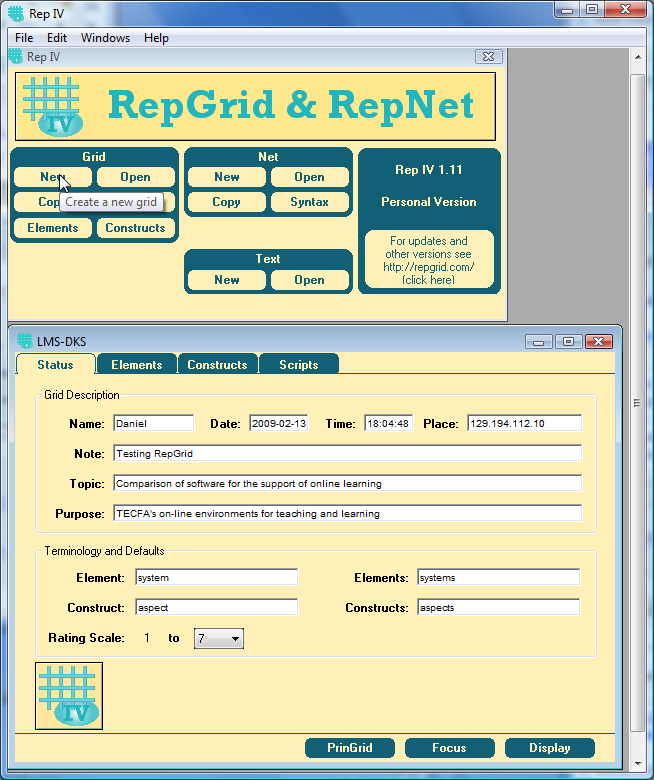Rep IV
This article or section is currently under construction
In principle, someone is working on it and there should be a better version in a not so distant future.
If you want to modify this page, please discuss it with the person working on it (see the "history")
<pageby nominor="false" comments="false"/>
Definition
Rep IV is the name for a series of tools for repertory grid technique (RepGrid) and visual syntactic structures used for representing construct networks (RepNet).
As of feb 2009 there are three versions according to the official Rep IV (RepGrid, SocioGrids, WebGrid & RepNet) page:
- Personal Version 1.11
- This “provides simplified versions of RepGrid and RepNet that are freely available for personal (non-commercial) use. It can elicit and analyze single grids with up to 15 elements and 15 constructs, and nets having a syntax from the set provided.”
- Research Version 1.12
- This provides the full versions of RepGrid, SocioGrids and RepNet for professional use (commercial)
- Web Version 1.12
- This extends the Research version with web server capabilities supporting WebGrid-style grid elicitation and analysis through web browsers.
- A functional test version is available on the Knowledge Science Group Server, University of Calgary. Daniel K. Schneider used both WebGrid III and WebGrid IV to generated the examples discussed in Repertory_grid_technique#Analysis_techniques repertory grid analysis techniques
An introduction to Rep VI/RepGrid personal edition
Read repertory grid technique if you are not familiar with the concepts !
Creating a Grid
- Step 1 - Create a new Grid
- Click on "New" and fill in the form
- Tips
- Name should be the name of the participant (E.g. Daniel). It will show in the elicitation dialog.
- The same principle is true for "Purpose". E.g. the participant will see "Daniel is considering TECFA's on-line environments for ..."
- You must choose a scale, e.g. 5 points (negative numbers are not allowed, max. is 9).
- It's a good idea to change terminology, so that users can understand what you mean, e.g. to study representations people have of our (TECFA's) online environments that we currently used, we used:
- system for element
- aspect for construct
.... The rest should be obvious
- Step 2 - Elicit elements and constructs
You also could administer an already made grid of course ...
Click on the Scripts tab and click Elicit Grid
- Break aspect match
An interesting feature of this system is "break aspect match"
Download and manual
- Rep IV Home Page Download for Win & MacOSX, manual
